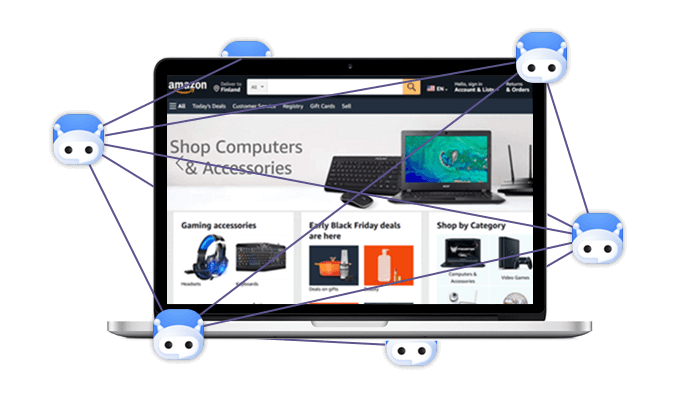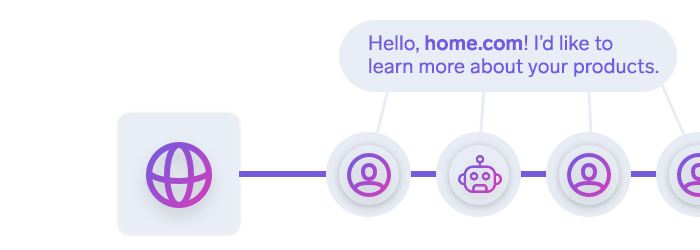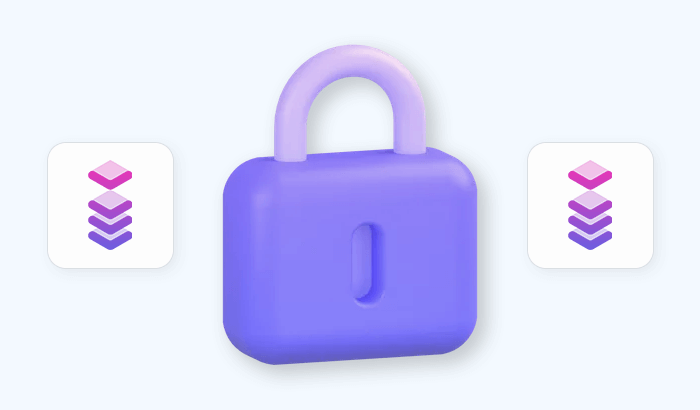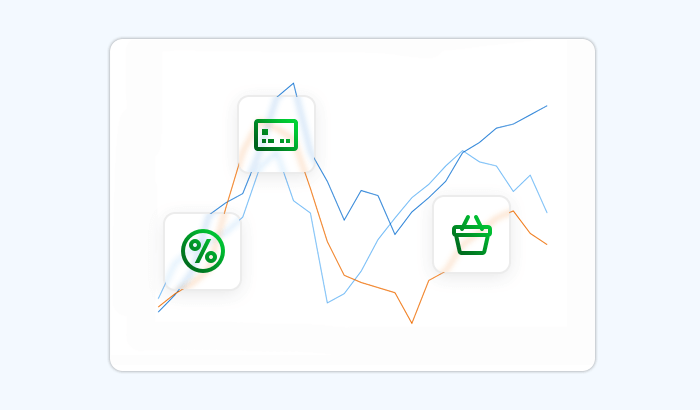

Email remains one of the most widely used communication channels for both businesses and individuals – and one of the most frequently targeted by cybercriminals. From phishing campaigns and spam floods to credential theft and unauthorized account access, email inboxes are constantly at risk. According to industry reports, email is still the primary vector for over 90% of cyberattacks, making effective protection measures essential. In this article, we’ll explore the most common email security threats, how proxies contribute to protection, and which types of proxies – including datacenter, residential, ISP, and mobile – are best suited for specific scenarios.
Common Email Security Threats
Email is one of the most valuable assets for attackers because it serves as a gateway to sensitive data, business communication, and personal information. Below are the most frequent threats organizations and individuals face:
Phishing & Spoofing
Attackers disguise malicious emails to appear as trusted sources, tricking recipients into clicking harmful links or sharing login credentials. Spoofed domains and lookalike addresses make these emails difficult to detect.
Spam Campaigns & Botnets

Mass email campaigns flood inboxes with unwanted content, often distributed through networks of infected devices (botnets). Aside from being disruptive, spam may contain malicious attachments or lead to phishing websites.
Credential Stuffing & Brute Force Attacks
Cybercriminals frequently use stolen password databases to attempt logins across multiple accounts. Automated scripts and bots rotate through thousands of IPs, trying to bypass security systems and gain access to email accounts.
Data Harvesting from Compromised Inboxes
Once an attacker gains access to an email account, they can harvest sensitive information, reset credentials for other services, or use the compromised mailbox as a stepping stone for broader attacks.
Business Email Compromise (BEC)
A growing and costly threat, BEC attacks involve impersonating executives or trusted employees to trick companies into transferring funds or sharing confidential information.
Role of Proxies in Email Protection
Proxies act as intermediaries between users and the internet, rerouting traffic through alternative IP addresses. While they’re often associated with web scraping or bypassing geo-restrictions, proxies also play a valuable role in protecting email systems from abuse and strengthening security measures.
Hiding Real IP Addresses

By masking the true source of a connection, proxies prevent attackers from identifying and targeting specific networks. This is particularly useful for organizations that regularly test email deliverability or investigate suspicious messages without exposing their infrastructure.
Filtering Suspicious Traffic
Proxies can be deployed as an additional checkpoint to filter incoming and outgoing email-related traffic. Suspicious patterns, such as rapid login attempts or bulk mail floods, can be detected and blocked before reaching mail servers.
Supporting Anti-Spam & Anti-Phishing Systems
Spam filters and phishing detection platforms often require large-scale crawling of domains, links, and sender addresses. Proxies enable these systems to gather accurate data from different regions, ensuring that malicious sources are flagged globally.
Enabling Secure Testing Environments
Security teams frequently simulate phishing, spam, and brute-force attacks to evaluate the resilience of their defenses. Proxies allow these tests to be conducted safely, with IP rotation preventing tests from being misinterpreted as genuine attacks.
Types of Proxies for Email Security
| Proxy Type | Best For | Advantages | Limitations |
|---|---|---|---|
| Datacenter Proxies | High-speed filtering tests, bulk traffic | Fast, affordable, scalable — ideal for testing spam filters with mass emails | Easier to detect and block than residential/ISP |
| Residential Proxies | Spam & phishing validation, regional checks | Real household IPs and authentic user behavior; effective for region-specific testing | Slower and costlier than datacenter proxies |
| ISP (Static Residential) Proxies | Deliverability testing, continuous monitoring | Blend of speed (datacenter) and authenticity (residential); stable for long-term tasks | More limited in availability |
| Mobile Proxies | Mobile-targeted phishing/spam monitoring | Use carrier-assigned IPs; extremely hard to block and ideal for mobile rendering checks | Higher cost and limited supply |
Use Cases & Scenarios
Proxies support email protection in a wide range of real-world applications. Depending on the type of proxy used, businesses can strengthen defenses, test deliverability, and gain better visibility into threats.
Email Deliverability Testing
Marketing and sales teams need to ensure their outreach campaigns don’t land in spam folders. By routing test emails through residential or ISP proxies, companies can verify inbox placement across different providers, regions, and devices.
Phishing Site Monitoring
Security analysts often track malicious domains that target corporate or customer inboxes. Using rotating residential or mobile proxies, they can safely investigate phishing websites from multiple geolocations without exposing internal infrastructure.
Corporate Email Protection
Attackers frequently attempt brute-force or credential-stuffing attacks against employee inboxes. Proxy-based traffic filtering can help detect unusual login attempts, block suspicious IPs, and prevent account takeovers before they cause damage.
Spam Filter Evaluation

IT teams need to confirm that anti-spam systems correctly identify and block malicious content. Datacenter proxies are well-suited for generating controlled volumes of test emails, allowing teams to stress-test filters under realistic conditions.
Regulatory Compliance & Audits
Organizations operating globally must comply with regional data protection rules. Proxies allow compliance teams to simulate access from different countries, verifying that email systems align with local security and privacy requirements.
Proxies vs. Other Email Protection Tools
Proxies are not a replacement for traditional email security technologies – instead, they complement them. Let's see how proxies compare with other commonly used tools.
| Tool | Primary Function | Strengths | Limitations | How It Complements Proxies |
|---|---|---|---|---|
| Proxies | Mask IPs, enable traffic filtering and monitoring | Provide anonymity, support spam testing, enable phishing site monitoring, assist with deliverability checks | Do not block malicious emails directly; work best when paired with other tools | Enhance testing, monitoring, and geolocation-based verification |
| Firewalls | Control incoming and outgoing traffic | Block unauthorized access and filter harmful traffic at the network level | Cannot simulate external user behavior or test from different regions | Proxies extend visibility by routing and analyzing traffic from multiple IPs |
| Spam Filters | Detect and block unwanted or malicious emails | Automated filtering of phishing, spam, and malicious attachments | False positives/negatives possible; may not detect new threats quickly | Proxies help test and validate filter accuracy across providers |
| VPNs | Encrypt connections and mask IP addresses for individuals | Secure personal browsing, protect remote access | Not designed for large-scale email testing or traffic filtering | Proxies offer scalable IP rotation, making them better for monitoring and automation |
| Authentication Protocols (SPF, DKIM, DMARC) | Verify sender identity and prevent spoofing | Strengthen email trustworthiness and reduce phishing risks | Require proper setup and ongoing maintenance; do not provide anonymity | Proxies assist compliance checks by simulating sender/receiver conditions worldwide |
Best Practices for Using Proxies in Email Security
While proxies can significantly enhance email protection, their effectiveness depends on how they are deployed. Following best practices ensures stronger defenses, reliable testing, and compliance with security policies.
Choose the Right Proxy Type
Not every proxy is suited for the same task. For example, datacenter proxies are excellent for bulk testing, while residential or ISP proxies provide authenticity when monitoring deliverability. Align the proxy type with your security objectives.
Rotate IPs Responsibly

Using a single IP repeatedly increases the risk of blocks or inaccurate results. Rotating proxies across regions and networks helps simulate realistic traffic patterns and avoids triggering security defenses.
Combine Proxies with Core Email Protections
Proxies should not replace spam filters, firewalls, or authentication protocols (SPF, DKIM, DMARC). Instead, they should complement these tools by enabling large-scale monitoring, testing, and threat intelligence collection.
Monitor and Log Activity
Tracking proxy usage is critical for compliance and accountability. Logging traffic helps detect anomalies, confirm test accuracy, and maintain transparency within security teams.
Respect Legal and Ethical Boundaries
When using proxies for email protection, ensure compliance with local regulations and corporate policies. Proxies should be applied to defend systems, test deliverability, and monitor threats – not to send spam or engage in malicious activity.
How Infatica Can Help
Email remains one of the most targeted channels for cyberattacks, making layered protection essential. While spam filters, firewalls, and authentication protocols form the foundation of email security, proxies provide an additional layer of defense – offering anonymity, monitoring, and testing capabilities that traditional tools alone cannot achieve.
Infatica’s global proxy network spans datacenter, residential, ISP, and mobile proxies, giving businesses the flexibility to choose the right type for any email security scenario. Whether you need to:
- Test email deliverability across multiple regions,
- Monitor phishing attempts safely,
- Conduct stress tests of anti-spam systems, or
- Simulate realistic traffic for security audits,
…Infatica provides reliable and scalable solutions to support these tasks.











